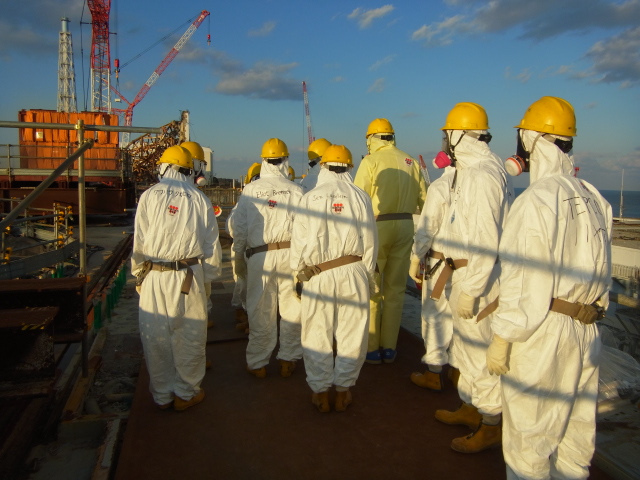
Most of us are aware of the Fukushima nuclear reactor and the endless problems it encounters. Arnold Gunderson, a former nuclear industrial senior vice president states that “Fukushima is the biggest industrial catastrophe in the history of mankind”. While this statement might sound overdramatic, Gunderson may be right.
On March 11th 2011, a 9.0 earthquake caused a tsunami that destroyed the cooling systems of Tokyo Electric Power Company’s (TEPCO) nuclear plant in Fukushima, Japan. More than 160,000 people were evacuated from the area during the meltdown and luckily there were no reported casualties officially reported by radiation exposure. However it is predicted that cancer within the area may have an increase in years to come from the exposure of radiation.
A statement recently released by TEPCO said that the declaration of the meltdown should have been done within days after the disaster and they did not reveal that the meltdown was taking place for almost 2 months. Internal regulations at TEPCO state that a meltdown should be declared if damage to the reactor core exceeds 5%. But this was not followed. Damage to one of the reactor cores reached 50% within 3 days of the tsunami. TEPCO said that they had informed the government regarding the ongoing meltdown as required by law and released a public statement saying “we apologise for the great inconvenience and worry”.
5 years on from the disaster and TEPCO are still trying to control the damage and radiation spills. “Fukushima has three nuclear reactors exposed and four fuel cores exposed,” Gundersen said. “You probably have the equivalent of 20 nuclear reactor cores because of the fuel cores, and they are all in desperate need of being cooled, and there is no means to cool them effectively”.
In December 2015, TEPCO had to deal with a massive amount of highly radioactive water generated by the necessity to cool the reactors and fuel cores. Having unable to device an effective plan, TEPCO decided to use 200-300 tonnes of groundwater and transfer it into the highly contaminated reactor buildings as a cooling method.
“The problem is how to keep it cool,” Gundersen explained. “They are pouring in water and the question is what are they going to do with the waste that comes out of that system, because it is going to contain plutonium and uranium. Where do you put the water?” TEPCO’s solution; dump the highly radioactive water straight into the Pacific Ocean.
Dr. M.V. Ramana, a physicist and lecturer at Princeton University’s Program on Science and Global Security and the Nuclear Futures Lab, says the problem is the lack of a real long-term plan for addressing the issue. “Most of the time TEPCO seems to be firefighting, discovering leaks here and unexpectedly high levels of radiation there,” Ramana told Truthout. “In part, this is because TEPCO’s plans do not account for the many possibilities of failure and putting in place backup safety systems.”
“There is no way to prevent the radioactive water from reaching the western shores of the North American continent and then circulating around the rest of the Pacific Ocean,” Caldicott said. “At the moment, it seems like this is going to occur for the rest of time.”
A study conducted in 2013 by the Nansen Environmental and Remote Sensing Center in Norway, the first radioactive oceanic plume released by Fukushima will likely hit America’s West Coast in force in 2017, with levels expected to peak in 2018. The report states that it is likely the radioactive material will stay concentrated along the West Coast until 2026.
Disturbingly, Rama believes that there is no “true solution” to the crisis. When asked how TEPCO and the Japanese government are likely to handle the crisis, he said, “What we will get is TEPCO and other Japanese authorities muddling through this completely unprecedented situation”.
Officials from TEPCO have said they are unsure when they might be able to solve its multitude of problems, and being to reduce the abundance of contaminated water at the plant.
You want to support Anonymous Independent & Investigative News? Please, follow us on Twitter: Follow @AnonymousNewsHQ
This Article (Fukushima 5 Years On. Has Anything Changed? ) is free and open source. You have permission to republish this article under a Creative Commons license with attribution to the author and AnonHQ.com.





Bury it under a massive man made mountain made mountain of gravel, sand, concrete. Keep piling and piling until its sealed and buried for a thousand years!
and than i will create one of the hell big mushrum whith gravel, sand and concrete because water evaporate. Also solution.
Anonymous, please cover the recent radiation leak in Florida!!!! They’re trying to cover it up.